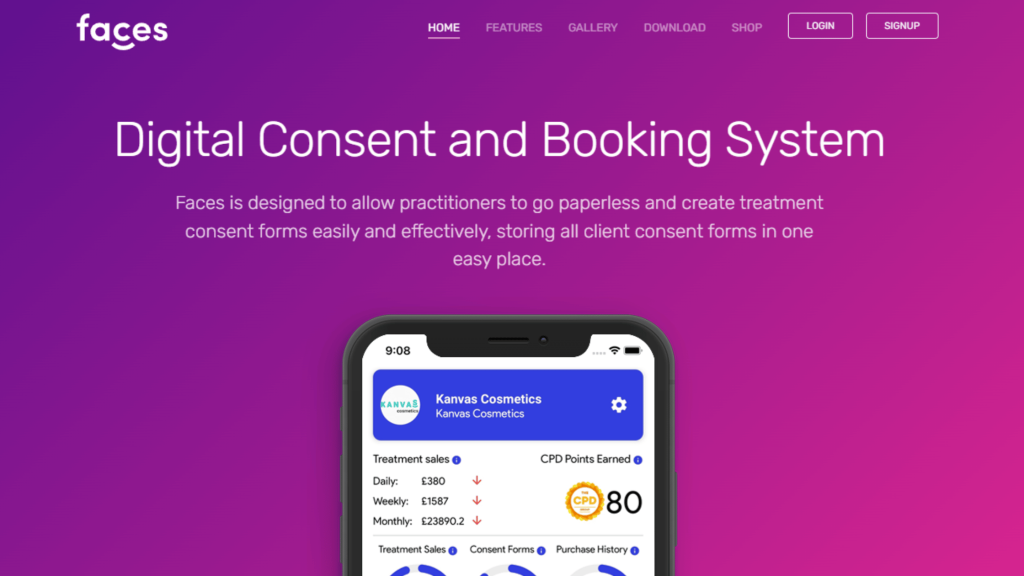
Faces app was built by a practitioner. Now, it is serving 100,000 practitioners in the UK alone. From a simple need to be met, it has evolved into a super-app capable of running your business efficiently in the background while practitioners focus on delivering their treatments.
Gone are the days when practitioners needed to pay for a booking system or a premium feature. Faces has innovated how a clinic management system should work. Contributing to the success of thousands of practitioners and clinics, it has been a resource hub and a faithful companion in providing support.
Now you might be wondering how practitioners rake in hundreds of pounds and save countless hours of work on a free app, and we’re here to tell you why!
An exposed clinic
Imagine an app where you just download and sign up for it, complete your basic profile, and get shown to 60,000 clients right after those steps! You don’t need to imagine it, because we’re describing the Faces app itself. Simply sign up and complete your clinic details, and you’ll be able to set up shop online.

The digital experience
Ditch the paper; go digital! Faces app has got your back with your paperwork. Catalogue clients, organise different forms, and let clients book easily using this supercharged app. You can manage multiple clinics by just using your phone. Millions of stacked paper forms were eliminated using Faces. Brutal!
Simplifying how you create a website
No coding experience? No hours to pour into building a website? Zero knowledge on what to put inside? Faces can build you one, quick and easy! Faces Website Builder has the capacity to streamline the creation of your own personalised website and get it done within 15 minutes or less!
Spread the costs
How does a hack to increase bookings by up to 37% sound? Well, here’s how! Faces has partnered with a giant to boost practitioner and clinic sales. Approved users have the ability to offer finance to their customers. According to our data, we typically see a 35%–37% increase in sales at clinics using finances versus those who haven’t unlocked its power. No start-up costs, get client payments within 24 hours, and see an increase in your client base.
Keeping clients hooked!
Lazy to do reminders? Don’t worry, we keep them hooked for you! Faces has a robust booking system that makes sure your client gets appointment reminders and constant follow-ups to make sure you stay on top of their mind. Faces app also offers a seamless user journey for your clients; this gives them the ability to see your treatments, prices, and availability in one sitting. Say goodbye to late replies and hello to a better client experience!

An ecosystem inside Faces app
Faces has created an environment for your business to thrive on. A seamless booking system, a no-code website builder, and a plethora of useful features within Faces have been the backbone of modern-day clinic and practitioners. With several features being released every year, the future where all your aesthetic practice needs are met is not far-fetched.
Faces has come this far.
We’re not stopping today!
Get your Faces app today by clicking this link.
Need help deciding where to start? Click here.










